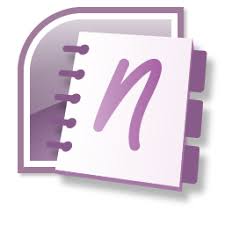 OneNote is a powerful tool all professionals should use, especially lawyers.
OneNote is a powerful tool all professionals should use, especially lawyers.
For those unfamiliar, OneNote is a Microsoft office program for note-taking, outlines, and so much more. Today’s savvy student uses the program instead of Word or the conventional pen and pad. However, I find that few lawyers use the program. This is a shame, and I’ll tell you why.
Just take a look at one trial lawyer’s experience with the program:
My opposing counsel kept looking at me with obvious envy as I made my argument to the judge why certain key evidence should be excluded from the trial we were involved in. I could tell from the look on the attorney’s face that he was puzzled how I could refer to portions of the record, prior witness testimony, exhibits, case law, and a brief that I had previously submitted, all without a single piece of paper in front of me. The only thing I used was my laptop and a mouse. He sat at a table with loose papers piled haphazardly, manila folders strewn about, and a Bankers Box on the floor, stuffed to overflowing.
When my opponent was speaking, he spent as much time shuffling through his papers and folders as he did addressing the court. Eventually, his disorganization began to annoy the judge. At one point he simply could not find the case he was looking for. He begged the court’s indulgence and promised he would provide the case reference later, after he’d had an opportunity to reorganize his file during a break. The judge was not amused, was not willing to wait, and ruled against him.
from an article by Bruce Olson.
By using OneNote, this trial lawyer was able to stay more organized than his opponent, and it had a direct effect on the outcome of his case. I use the program almost everyday, and I have found the most siginificant benefits to include:
- Search feature – you can search an individual page, notebook section, or entire notebook. The search feature is more powerful than Word’s “ctrl+f.” OneNote’s search is more analogous to Google’s search power. The search will display hits for your search in chronological order, and can be cycled through with ease.
- Import print feature – any document you can print on your computer can be sent to OneNote. The document will be shown as it would had it been printed on paper, but will be on a new OneNote page ready to be added to your notebook. *What is more, you can search printed documents. That’s right, OneNote will comb through the document making the document subject to searches.
- Clip art feature – You can clip any section from your screen and quickly add it into OneNote. It works just as well as a way to capture selected portions of a document when you do not want to print the whole thing.
- Simple and adaptable – Above all, OneNote is so simple to use, anyone should be able to use these techniques with a minimum of time invested in learning how to use the program. After you have the basics down, you can adapt the ways you use the program to fit your style. Keep in mind that it’s just as useful at depositions or motion hearings as it is at trial. In a sense, wherever you use a legal pad, you should consider using OneNote.
I firmly believe OneNote is a great tool that would benefit any lawyer. Whether in trial or in the office, OneNote is a fantastic way to keep everything organized and ready to be used. I’m glad to hear it was at an ABA TechShow. Perhaps the rage will catch on soon enough.